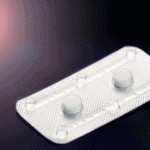
![]() Ginika Oluchi okekeMaternal and Neonatal CareMay 31, 2021
Ginika Oluchi okekeMaternal and Neonatal CareMay 31, 2021
Skin bleaching among African women of childbearing age is significantly linked to the concept of beauty, along with social and economic benefits. This shows that the possible health concerns of skin bleaching products are not well known to women. The availability of skin bleaching products in Nigeria and the practice of skin-lightening have not decreased significantly despite the awareness of the products. Skin bleaching tools come in the form of lotions, ointments, injections, tablets, and capsules.
The term skin bleaching describes the application of chemicals to lighten skin tone. Although hyperpigmentation issues on your skin can be treated with skin bleaching products, the purposeful use of these products to lighten skin tone is more common among women of childbearing age.
For many years, skin bleaching treatments have been regularly and persistently used in African and Asian cultures; estimates of their prevalence range from 25% to 96%. With the increase in prevalence, skin bleaching has spread beyond the continents of Africa and Asia and disproportionately affects communities of various skin types.
For some, it is to achieve a clearer and even toned skin; for others, it is to have glowing skin. For the majority, it is to achieve a lighter and brighter complexion.
In the African cosmetic market, skin bleaching products are not yet properly regulated, and there is little conformity to existing policies in this regard. Skin bleaching amongst women has been in practice time immemorial as a result of their unending quest for a brighter, lighter complexion. This singular need has created a vast market for all manner of bleaching creams.
Your personal skin care routine should be re-evaluated when you are expecting your bundle of joy. The period of pregnancy comes with all types of physical and hormonal changes, among which often result in the stimulation of the body’s melanin production, leading to changes in skin pigmentation. For this reason, it is not unusual to find pregnant women seeking ways to lighten their skin.

Applying bleaching creams is undoubtedly one of the fastest and easiest ways to achieve a brighter complexion. When used appropriately and with the right ingredients, skin bleaching creams can bring long lasting results. But this is just one side to it. The other less considered side to this seemingly quick fix is the overreaching side effects of bleaching creams especially as not many women buy the right product or apply it correctly.
Though skin bleaching is different from skin brightening, the purpose of skin brightening is to remove damaged and dull skin cells from the outermost layers of your skin, giving it a youthful, natural shine. The skin-brightening products come with an essential anti-aging compound that enriches your skin. Whichever skin tone changes you want to make, always avoid having any of the procedures while pregnant. Let’s explore the structure of skin for better understanding.
Your skin is composed of muscles, connective structures, blood capillaries, lymphatic, and epithelial cells, and certain actions do have an impact on your skin; the impact could either be temporary or permanent.
The structure of the skin consists of two layers: the dermis and the epidermis. The epidermis is the outer layer that forms the boundary with the outside world. The epidermis is only a few millimetres thick, and that makes it bleed easily when there is a small cut on it because the impact reaches the blood vessels in the dermis quicker. That shows that your outermost skin layer, epidermis, can easily be harmed by skin bleaching products due to its thinness.
When you compare your epidermis with your palm and sole, you will notice that they are thicker, several millimetres thicker than epidermis. That is why those parts of your body are not easily affected.
The epidermis also has four layers and they are:
The stratum corneum, or horny layer, plays a major role in shielding the body from the ultraviolet radiation that emanates from the sun which, when in excess, can be fatal to your body’s live cells. This highlights the fact that bleaching, which removes the outer layer of skin, exposes the skin to excessive UV radiation, which is fatal to skin cells.
You should also understand that melanocyte cells within the epidermis layer create melanin, which gives the skin colour and absorbs harmful UV radiation, and that the skin tone you want to change is mostly determined by your genetics. You may have also noticed that your skin colour differs throughout your body and between different bodily regions.
The dermis, the second layer of skin, is a robust layer capable of shielding your body from impacts and bruises. Furthermore, it ensures a constant fit for your skin. The only time your skin starts to weaken is as you age and lose some of your skin elasticity. The nerve terminals found in the dermis aids in skin sensory function. Importantly, the blood flow in the dermis helps regulate body temperature and provides nourishment to the skin as well as the body.
Your skin has various functions in addition to covering the body; it creates a good barrier separating your interior body cells and organs from the exterior. Also:
All the crucial skin functions depict that your skin is a vital organ, and any significant damage to it can have an adverse effect on the body as a whole.
To keep your skin healthy, you will need to consciously include a healthy diet, drink adequate water daily, and get quality sleep. There is no quick fix to anything in life; make it a habit to live a normal and healthy life.

One of the adverse effects of bleaching the skin before or during pregnancy is that the active agents in most bleaching creams thin the outer layer of the skin called the Epidermis. This weakens the safety and protection of the innermost layer of the skin making one’s skin prone to skin infections as it reduces the skin’s resistance to bacterial or fungal infections.
Inarguably, skin bleaching reduces the integrity of the skin and slows down healing in the event of an injury. It gets even worse for pregnant women who may have no option but Caesarean section to birth their babies. Stitching up of the CS site may be challenging as well as the healing of the incised area.
Toxins from harmful chemicals:

Most bleaching creams contain hydroquinone, phosphoric acid, hydrogen peroxide and high amounts of mercury which have been proven to pose adverse effects on the skin. In worst case scenario, these chemicals can result in extreme skin allergies or even skin cancer when used for a long time. Less adverse effects include skin discoloration, scarring, wrinkles and burns. Since a good percentage of the chemicals in a bleaching cream are absorbed into the skin during application, it is best to desist from them while pregnant as exposure to some of these toxins can lead to fetal abnormalities (birthing an abnormal baby).
Skin sensitivity:

When pregnant, the skin becomes more sensitive than usual, thus increasing the risks and complications from skin bleaching. Some of the active ingredients in bleaching creams listed above have the potential to result in the formation of a small placenta, low baby weight and reduction of cortisol which are very essential during pregnancy.
Vulnerability of fetus:

The numerous consequences of skin bleaching ranging from poor wound healing, skin lesions and thinning of the top layer of the skin puts the unborn baby at risk of infection as the harmful chemicals contained in most of the creams cause fetal toxicity. Adverse effects also include stillbirth and neonatal infections.
Most of the time, skin patches and dark spots that come with pregnancy are simply natural reactions to changes in hormone levels. Therefore, it may be helpful to be patient and wait for the skin pigmentation to clear off on its own. Usually, six months to one year is enough time to get one’s skin back.
Alternatively, women, especially while pregnant, can go for more safe and sustainable skin improvement regimen like good diet, exercise and natural skin care routine.
If one must do skin lightening intervention, it is wise to do so under the guidance and supervision of a qualified dermatologist. If you are unsure about a particular ingredient or a product, Speak to a Doctor now. Already having any of the negative effects of skin bleaching or may be at risk of the reactions above? It is advisable to Consult a Doctor for immediate medical help.
Pregnancy is always a period when a woman’s body undergoes some changes due to the rise in hormones that support the growing baby in the womb. It is a delicate moment, as the unborn baby depends solely on the mother for enriched nutrition and emotional support. Whatever goes into your body will eventually get to your unborn baby, and that goes with the skincare products you use, especially ones with any dangerous chemicals. To know what substance causes harm to your unborn baby, if you are already using one while pregnant, and what to stop, you can speak with a healthcare professional to guide you through. You do not need to visit the office’s physical location; through telecommunication devices, you can get all the services you need.
Skin bleaching is a choice, not a necessity; before you explore it, make an in-depth inquiry by consulting a dermatologist on the benefits and side effects. Just a click away on your mobile device and the answers to your life explorations are met. You neither need to queue on a waiting line nor have to travel away from home or work to get medical advice about your health and life quest. Kompletecare got you; all discussions with the professionals are confidential and with mutual trust and respect. Speak with a professional.
1.Can skin bleaching affect an unborn baby?
Skin bleaching might be considered safe during pregnancy, as there is not enough research on the impact on an unborn baby. However, before you apply it check what ingredients are added to the product and also consult your doctor. On the contrary, a study reported that steroids from skin bleaching ingredients can have negative effects on both the mother and the child during pregnancy.
Unborn babies are particularly vulnerable to mercury exposure, an ingredient in skin bleaching product. Pregnant women or women of childbearing age should not be exposed to mercury.
The side effects of skin bleaching on women include dermatophyte infections, severe scabies, eczema, irritant dermatitis, and dyschromia and ochronosis. If you must use any skin bleaching product, ensure you evaluate the ingredient description, and if you find that it contains mercury, sometimes referred to as “calomel,” “mercuric,” “mercurous,” or “mercurio,” or if the ingredients are not included on the packaging, do not use the product.
2.Can I use skin-lightening cream for melasma?
Pregnant women are the target market for several skin-lightening products intended to treat melasma, despite the possible harm to both humans and animals.
One typical pregnancy complaint from most pregnant women is melasma, sometimes known as the pregnancy mask. Hormonal changes cause skin to darken, and melanin deposits appear on the face and along the central line that runs through the navel to the public bone (the linea nigra).
It is not recommended to use skin-lightening lotions to lessen melasma, as it is a pregnancy-induced skin alteration. Melasma is not a permanent discolouration; after pregnancy, part or all of the pigmentation, like melasma will disappear.
3.Can I bleach my face and body during pregnancy?
During pregnancy, bleaching your face, hands, legs, underarms, and back is safe. Bleaching the stomach region is not advised. Applying bleach topically lowers the risk of birth abnormalities and prevents them from entering the bloodstream. The hydrogen peroxide breaks down readily and takes longer for the body to absorb.
To avoid feeling queasy or nauseous from the skin bleaching product odour, you might opt for bleach that contains natural chemicals, like turmeric, a natural pregnancy skincare solution.
4.What happens if I stop bleaching my skin?
It usually takes a few days for the effects of such skin bleaching lotions to become apparent once you start using them. Similarly, your skin will not return to its natural colour right away after stopping the skin bleaching cream; rather, it will happen gradually over a few days.
5.What are the effects of skin bleaching?
The harmful effects of skin bleaching are:
6.How can I prevent birth defects during pregnancy?
Birth defects can be prevented during pregnancy, all you need to do is:
Amaka, B. (2023). How skin bleaching creams can cause kidney failure.
Cocci Beauty. (2024). Does skin lightening affect pregnancy?
Grunebaum, A. (2018). Skin bleaching while pregnant.
Joana, A., Obinnim, E., Selase, G. R., & Emefa, A. F. (2016). Skin bleaching and its negative effect on the physical appearance of the black skin (A case study of youthful ladies and women in the Ho Municipality in Ghana).
Mahe, Ly, F., Aymard, G., & Dangou, J. M. (2003). Skin diseases associated with the cosmetic use of bleaching products in women from Dakar, Senegal.
Mahe, A., Perret, J. L., Ly., Fall, F., Rault, J. P., & Dumont, A. (2006). The cosmetic use of skin-lightening products during pregnancy in Daka, Senegal: A common and potentially hazardous practice.
Rai, D. (2023). Is it safe to use skin lightening products during pregnancy?
Darj, E., Infanti, J. J., Ahlberg, B. M., & Okumu, J. (2015). “The fairer the better?” Use of potentially toxic skin bleaching products.
Umenze, C. (2023). 10 side effects of too much alcohol.
Medical Disclaimer: KompleteCare™ aims to improve the quality of life for everyone with fact-based content about the nature of diseases, preventive care, behavioral health conditions, treatment options and their related outcomes. We publish material that is researched, cited, edited and reviewed by licensed medical professionals. The information we provide is not intended to be a substitute for professional medical advice, diagnosis or treatment. It should not be used in place of the advice of your physician or other qualified healthcare provider
NutritionFebruary 5, 2025
MedicationFebruary 5, 2025








